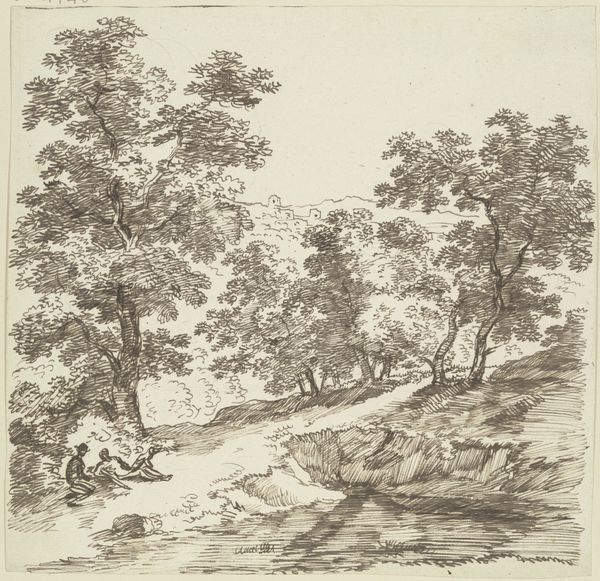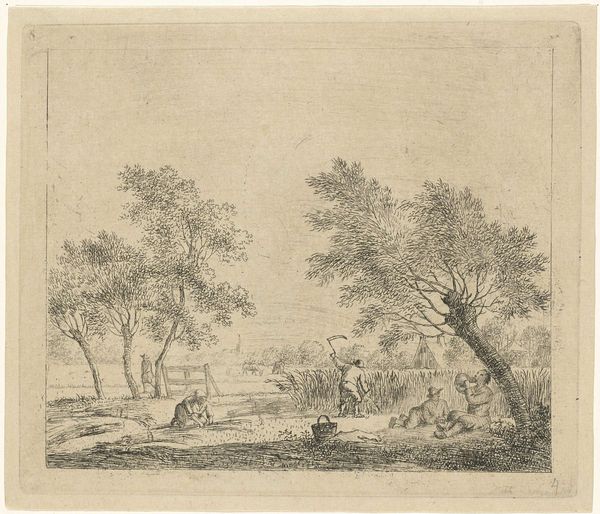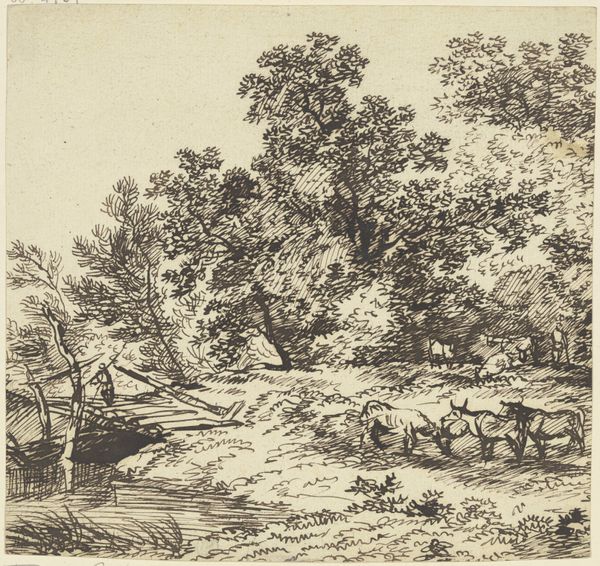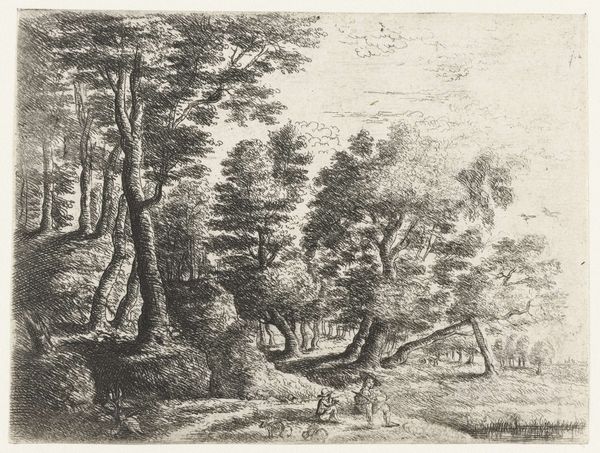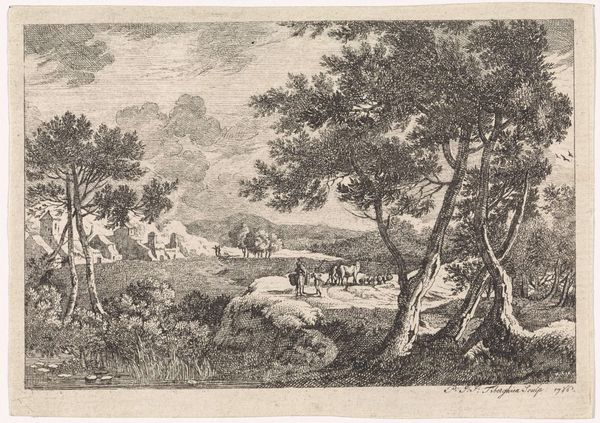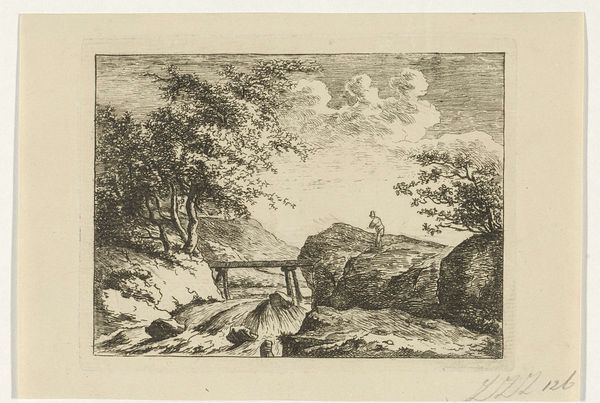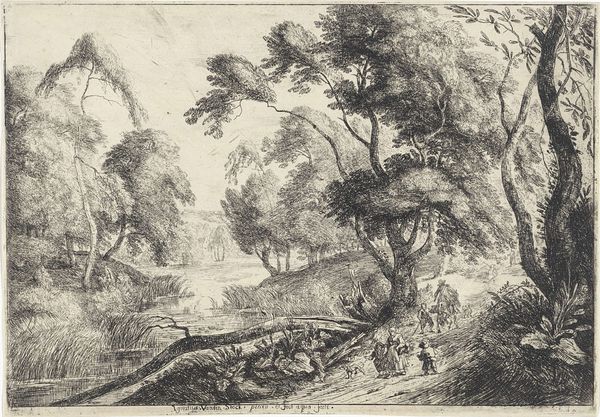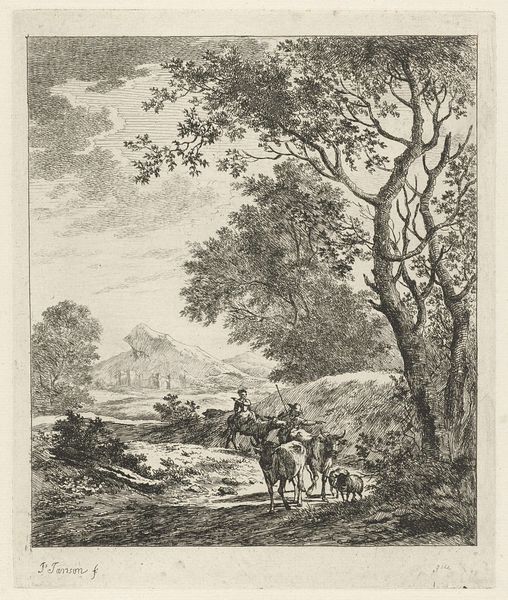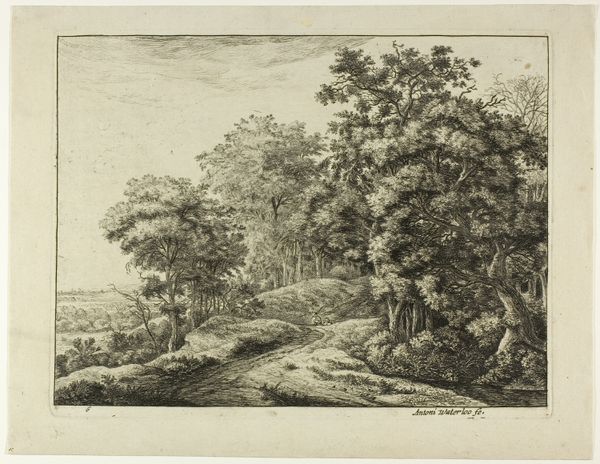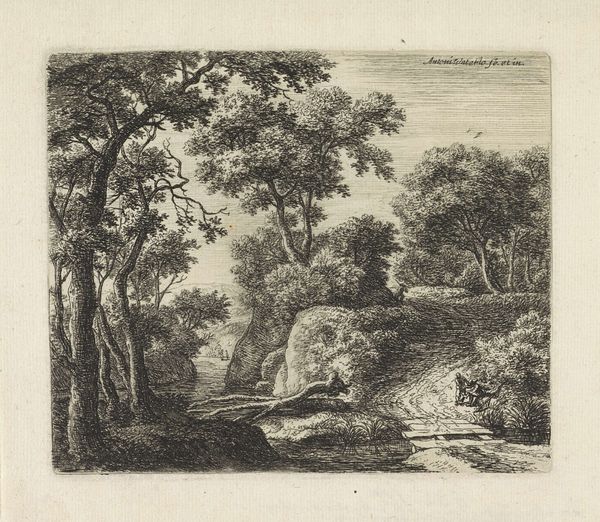
Dimensions: height 202 mm, width 322 mm
Copyright: Rijks Museum: Open Domain
Curator: Hendrik Spilman's "Landscape with Resting Shepherds and Cattle" offers us a pastoral scene rendered in pencil sometime between 1742 and 1784. The location seems fitting, doesn't it? Editor: Yes, a peaceful hush falls over the room looking at this pencil drawing. There's a muted tone to it all, a stillness in the composition. Curator: Notice the shepherds—symbols of guidance and protection, deeply rooted in Western art. And then there are the cattle, representing abundance and prosperity. What do they suggest to you in this particular context? Editor: Well, looking at how precisely the animal’s forms are captured with a humble pencil suggests a connection to the land and its resources, and that in turn speaks to a specific economy in which the material realities of farming and husbandry dictate how value is ascribed. Curator: An astute observation. Consider also how landscapes in Dutch Golden Age paintings often reflect a sense of national identity, a pride in the Dutch countryside. This work seems to consciously evoke that period. What kind of values might this recall? Editor: For me, seeing this as a pencil drawing, the value is clearly in the skilled labor of Spilman's hand – the act of rendering, replicating, recording a landscape and its people. The 'Dutch Golden Age' ideal being circulated isn't as impactful as that of its materiality. Curator: The way he uses line weight to create depth, the subtle gradations of tone that suggest atmosphere. These elements create a believable space but also perhaps communicate something about human influence. Editor: You're right to call it a 'believable space,' one dependent on the accessibility of graphite, the paper available, the labor in deploying these common materials. Curator: A final reflection. The art invites us to find a connection across eras – between that time and our own. Editor: It reminds me that what we often define as monumental is supported by unseen processes of making and labor. Thank you for pointing that out.
Comments
No comments
Be the first to comment and join the conversation on the ultimate creative platform.

